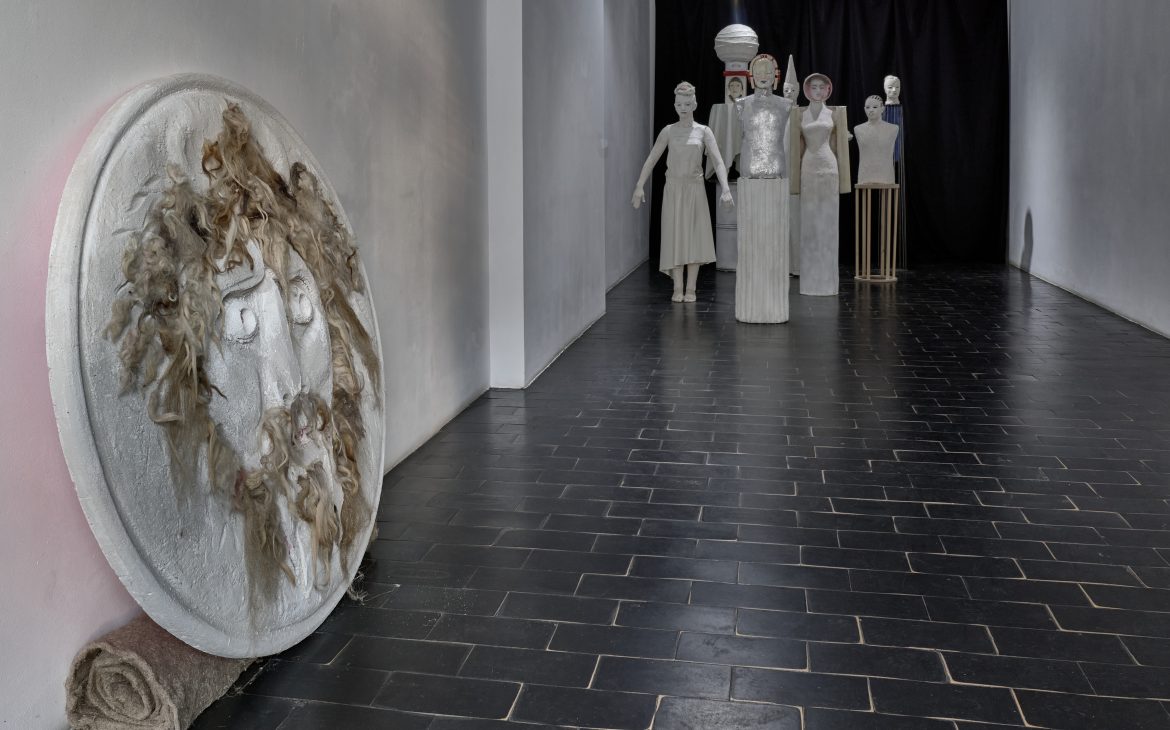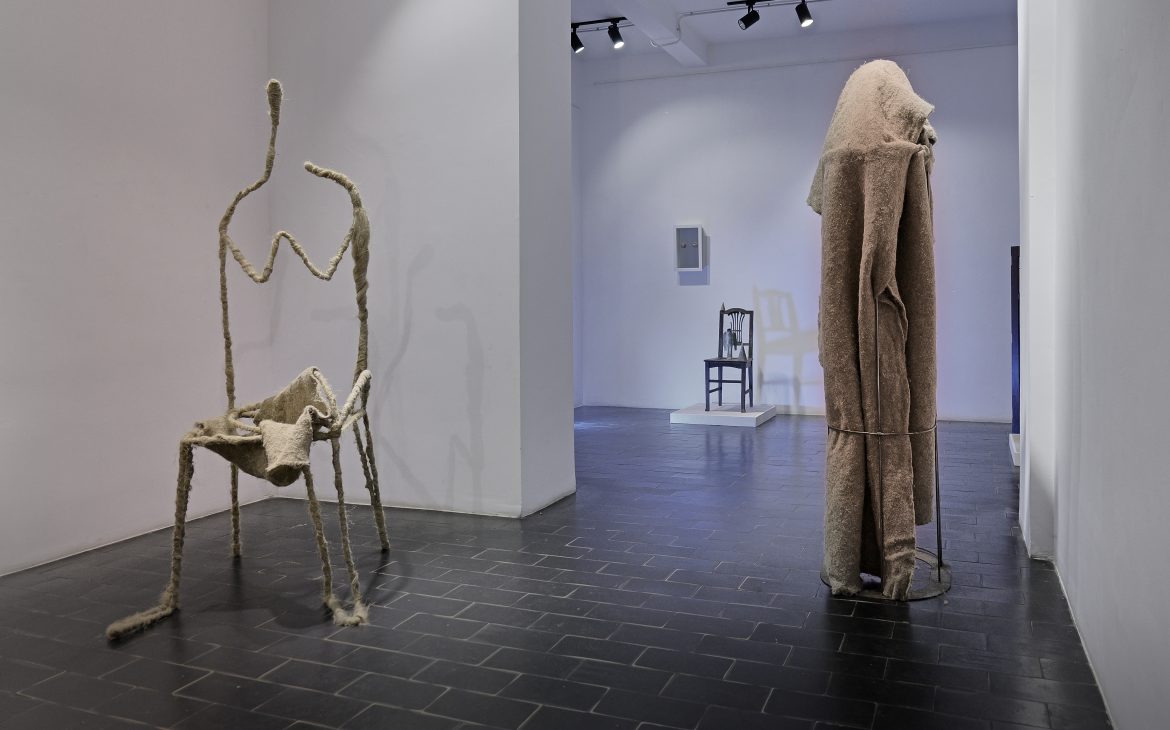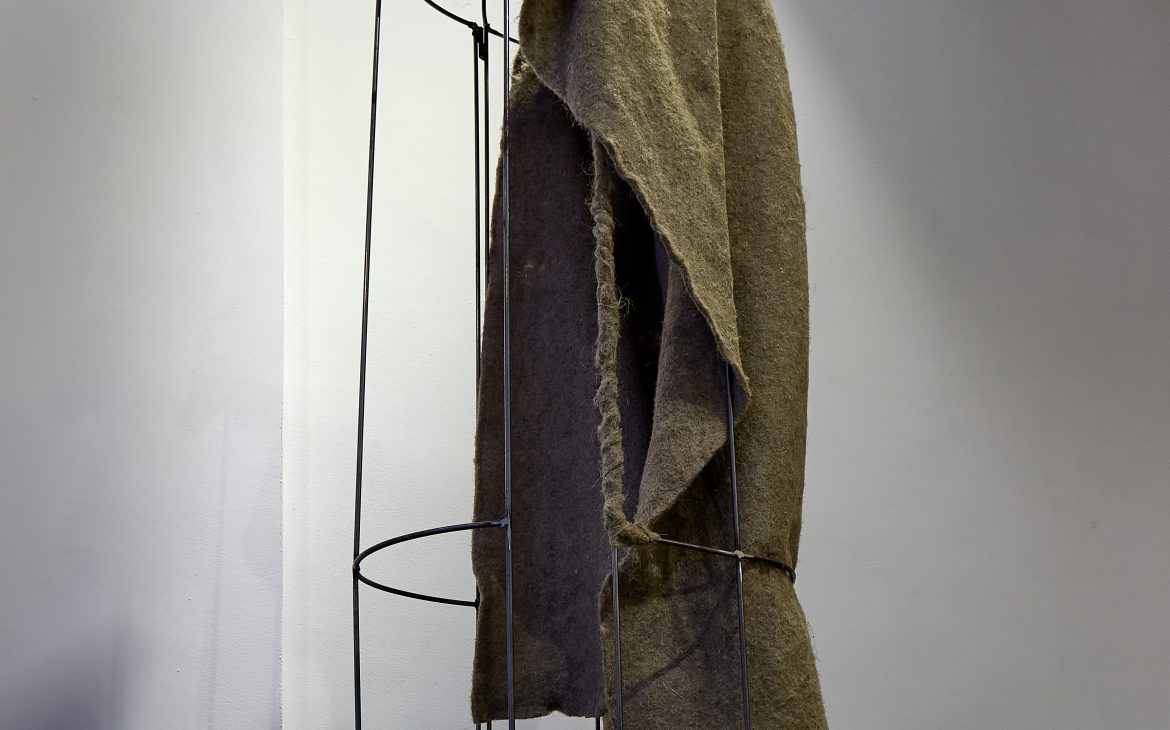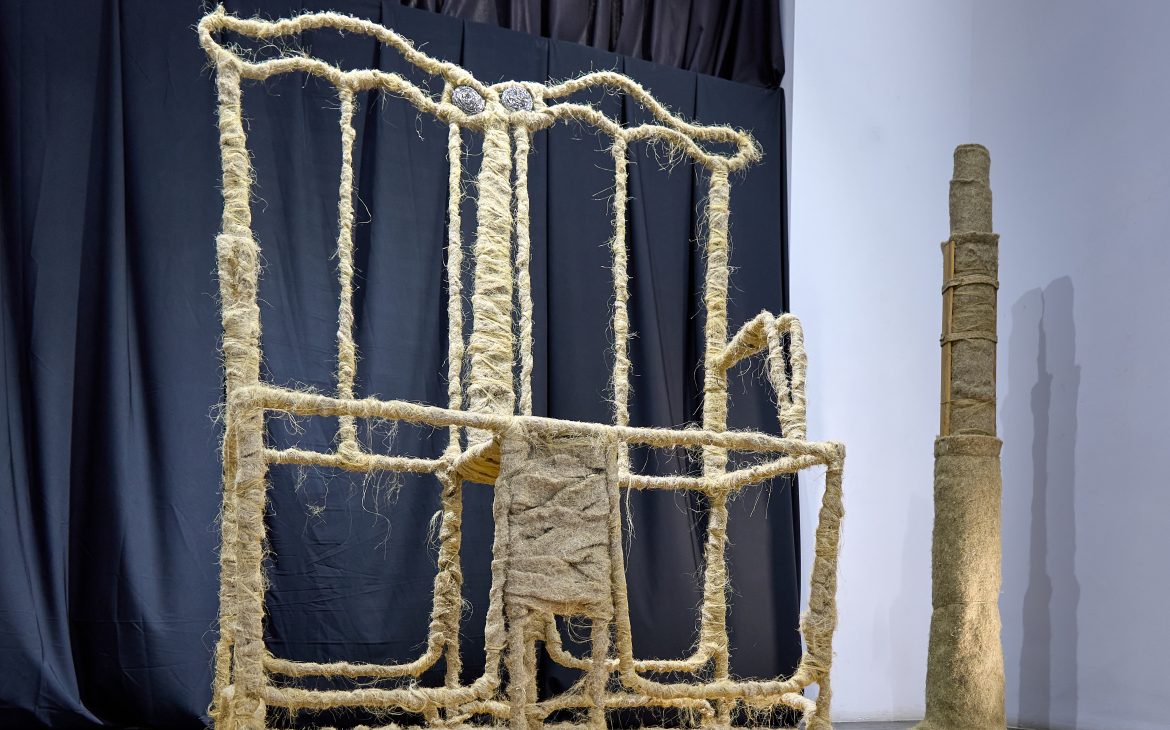Elena Scutaru, in the most recent artistic project, entitled “Body figure * idols”, presented at Simeza Gallery and curated by Adriana Oprea, “proposes a retrospective exhibition, bringing together samples of work sequences, installations, exhibitions and series of objects that have marked the artist’s career from the beginning of the 90s to the present. The retrospect, the reconstructive gesture and the attitude oriented towards re-elaboration, replication and self-quotation are defining features of her way of working; the development of a project through the recovery, resizing and re-production with modifications of some parts, situations and challenges raised by previous projects being for Elena Scutaru the modus operandi.
The human silhouette incorporated in the installations Processions that she inaugurated in 1995 and then resumed in 1997 and 2000 is an example of how a hybrid and multimedia leitmotif, summing up several aesthetics related to sculpture, object, assemblage but also try a scope of land art, starting from the artist’s studio and subsequently navigating biographical eras twinned or separated in time, distinct career stages artistic, styles and professional contexts successive and each time different. The current project installed in the Simeza gallery, at the same time an art space with historical charge and iconic status in the world of Romanian art, takes this own dynamic of the artist’s production and stages it from the positions of a new chronological distance from her own workshop history, a new such episode.
Formats and materials brought to various scales and proportions distribute on a wide visual palette the families of “idols” assembled from clay, straw, hay, branches, wood chips, iron-concrete, textile, jute, hemp, sisal, wire mesh, wood, plaster, tin or resins. The reference to a cultural and religious entity that has crossed centuries of Greco-Latin and Judeo-Christian history and art, up to the “modern idols” of the avant-garde and recent political philosophy, brings together a multitude of concepts and realities that Elena Scutaru’s characters embody with their already recognizable hieratic and theatrical air. From idea to image, form to body, representation and perception, fetish and cult, appearance and shadow, narcissism and celebrity, Body figure *idols (re)stages the structural dimensions of the artist’s activity, namely the dreamlike, the fantastical, the strange and doubling, masking, unveiling and concealment, self-portraiture and self-mystification. Appealing to the possibilities offered in the history of art by reconstitution, re-engagement of the older, recovery, copy, replica and reconstruction, Elena Scutaru (herself) offers a new commentary, scaled to the present historical moment and practiced in relation to her own identity themes which, being correlated with the religious, authenticity and the simulacrum, value new points of contact between the artist’s introspective universe and the generic consumerism of the current context in which she works.” Adriana Oprea











